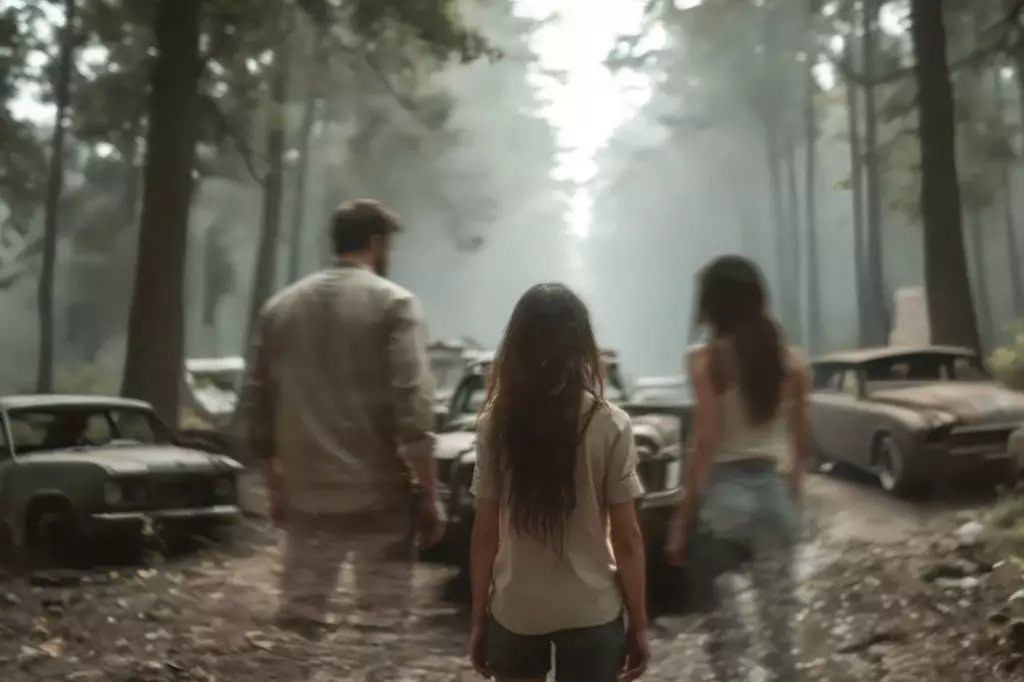In the ever-evolving landscape of cinema, collaborations across borders are creating compelling narratives that transcend cultural boundaries. The recent partnership between Calgary’s Peterson Polaris Corp and Filipino-American filmmaker Tyrone Acierto for the film “What’s Left Of Us” serves as a stellar example. Not only does this project headline an international ensemble cast, but it also promises an innovative blend of action and horror infused with poignant socio-political themes. This venture is not merely a technical collaboration; it’s a meld of artistic sensibilities that speaks of the shared human experience in some of its darkest interpretations.
What sets “What’s Left Of Us” apart is Acierto’s track record of delving into the very heart of identity and survival, as showcased in his previous works like “The Grave Bandits” and “Watch Me Kill.” Such thematic pursuits resonate powerfully in today’s global context, where the essence of identity is frequently under duress. The allure of genre-driven narratives rooted in Southeast Asian storytelling adds a unique flavor that could broaden the film’s appeal, positioning it as a bridge between Western and Eastern cinematic traditions.
An Award-Winning Artistry Behind the Camera
Michael Peterson, the driving force behind Peterson Polaris Corp, has firmly established himself as a formidable player in the horror film genre with works like “Bloodthirsty” and “Harpoon.” His catalog not only garnered accolades but showcased his ability to evoke visceral emotions through suspense-driven storytelling. Along with Acierto, the two producers represent a significant shift towards recognizing the importance of diverse influences in mainstream horror. Their mutual commitment to storytelling reflects a belief that cinema can captivate while simultaneously provoking introspection.
According to Peterson, the strength of this project lies in its ability to highlight the creative power that arises from collaboration between Canadian and Filipino teams. His enthusiasm underscores the project’s potential for cultivating a cinematic experience that resonates worldwide. The symbiotic relationship between the production teams promises not only to explore the rich landscapes of the Philippines but also to encapsulate universal themes of memory, identity, and the fragments of history often overlooked in contemporary storytelling.
The Layers of Dystopia
At its core, “What’s Left Of Us” paints a stark portrait of a society plagued by a memory-erasing infection, turning survival into an existential quest for truth. This inventive premise brings to light our anxieties about the current state of reality, where misinformation can blur lines between fact and fiction. The narrative promises to engage audiences on a visceral level, as they navigate a world where the core elements of identity are not only questioned but systematically dismantled.
Acierto’s perspective lends the film a deeply personal significance, as he articulates a cultural yearning for authenticity in an era overwhelmed by fabricated narratives. His assertion that the film serves as a reflection of modern anxieties is not just a marketing gimmick; it encapsulates an urgent dialogue that filmmakers and audiences must engage in. By situating the story within a dystopian backdrop, Acierto is harnessing the genre to confront pressing societal issues, weaving a narrative that is both horrific and deeply relatable.
Bridging Cultures Through Shared Storytelling
The collaborative efforts of Acierto, Peterson, and Wilfredo Manalang of Fusee highlight a broader trend in filmmaking that champions global connectivity. Manalang’s founding of Fusee is indicative of an awakening in recognizing the magic that occurs when diverse cultures converge. This broader representation not only enriches the narrative but also opens doors for undiscovered talent and untold stories in the realm of genre cinema.
Such efforts are crucial not only in diversifying the storytelling palette but in ensuring that global audiences are presented with authentic and nuanced narratives that speak to their realities. As “What’s Left Of Us” embarks on its filming journey in the Philippines, it stands to become a touchstone for future collaborations that break away from conventional storytelling molds, demonstrating that the power of cinema lies in its ability to evoke emotion and spark necessary conversations across cultures.
Ultimately, this film is more than an exploration of horror; it’s an invitation to experience an evolving narrative landscape where empathy, culture, and identity intertwine, promising to leave a lasting impression on viewers worldwide.

